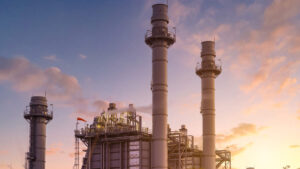GOT GAS: Farewell to the gas-fired recovery – and here’s what Labor may have in store

Say goodbye now. Pic: Westend61 via Getty Images
- The end of the gas-fired recovery plan?
- But new gas project will still be approved
- No more attempts to add CCS to ARENA remit
With Labor taking over the reins of power following Saturday’s election, there’s one other likely casualty besides the term-and-a-bit Morrison government.
That’s right, it’s time to say goodbye to the much-criticised Gas-Fired Recovery plan which sought to strengthen the Australian economy by making energy affordable for businesses and households.
This would supposedly be achieved by making gas more affordable through developing new gas basins, setting new gas supply targets and enforcing “use-it or lose-it”, and developing a gas reservation scheme.
While the Morrison government didn’t hang around long enough to achieve the two latter objectives, its goal of developing new basins also ran into that not so little problem that the targeted areas relied on coal seams or shales, which as pointed out by Got Gas in past, are anything but cheap or affordable.
That’s not to say that environmental groups (and the Greens who are looking like they will hold the balance of power in the Senate), hoping that no new gas and oil projects will be approved, will have their way either.
Here’s what Got Gas thinks we can expect to see from our new overlords.
Natural gas still has a role to play
Love it or loathe it, natural gas isn’t going away anytime soon.
AGL Energy recently offered spot prices that are more than four times higher than the usual rate while the Australian Energy Regulator is expected to increasing standing power prices (for the east coast at least).
This is all due to rising gas prices even as LNG producers in Queensland exported more gas than ever to take advantage of sky high global prices.
With many of the older gas fields starting to see production decline, the Albanese Labor government is likely to keep releasing oil and gas acreage as well as approve the development of new projects if only to keep gas flowing to meet current demand.
What the new government is unlikely to do (though that’s not 100%) is put Commonwealth funds into new fossil fuel infrastructure.
Our new Prime Minister is also known to favour a cap on gas exports, which will serve to make more gas available to the domestic market.
But wait you say, won’t developing new gas fields take time? Time enough for new renewable energy sources to be brought on line?
That might be true at any other point in time, but because of the global energy crisis, everyone and their Aunt Harriet is scrambling to get their own renewable energy programs into place.
Couple that with supply chain issues and implementing new renewable energy projects becomes that much more challenging.
New infrastructure will also be required, which will just add further to the amount of time needed for the energy projects of the future to start making a difference.
Renewable energy to play a bigger role
It maybe just a bit disingenuous to say that renewables won’t be replacing gas anytime soon and then turn around to say that it will play a bigger role in the energy mix.
But the fact is that gas isn’t the only fossil fuel out there. We still have the fuel that was backbone of the early industrial revolution and coal is almost certainly heading the way of the dodo much sooner than its counterpart.
Labor is certainly not going to blink when coal fired plants close earlier than expected – unlike our previous energy minister chucking a minor tanty after Origin Energy’s decision to shutter the Eraring power station.
It is also almost a certainty that it will leave the remit of the Australian Renewable Energy Agency alone rather than trying to expand it include technologies such as carbon capture and storage.
Go, go green hydrogen
Back on the topic of gas, the new government is likely to push hard on the clean, future gas of the future – aka green hydrogen.
Not only does hydrogen represent a way to store excess renewable energy for use when the sun don’t shine, it is also a potential export commodity that could replace LNG once the difficulty in transporting hydrogen is worked out.
Transportation of hydrogen is challenging as a vessel transporting liquefied hydrogen would only carry about 27% of the energy carried by an LNG vessel of the same size.
Liquefying hydrogen is also an expensive process, requiring 33% of the energy in the hydrogen compared to 10% for natural gas.
Finding the right carrier for the hydrogen is critical and some notable options include ammonia, methanol and liquid organic hydrogen carriers.
Expect to see Labor committing more funding going into green hydrogen production and transportation.
Related Topics

UNLOCK INSIGHTS
Discover the untold stories of emerging ASX stocks.
Daily news and expert analysis, it's free to subscribe.
By proceeding, you confirm you understand that we handle personal information in accordance with our Privacy Policy.








